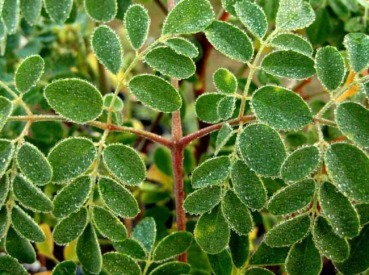
Listen up, Popeye, there’s a new leafy green in town and it’s better than spinach.
The plant is called moringa, and it can do much more than strengthen your biceps. It may be able to help fight the side effects of cancer.
Moringa is a naturally grown plant native to India, but is cultivated worldwide in tropical and subtropical regions worldwide. It is known for its nutritional and medicinal properties that potentially can help combat the symptoms of cancer, asthma, cardiovascular disease, diabetes and other diseases.
There are 13 species of moringa that range in size, from tiny, leafy herbs to tall, massive trees. The most commonly harvested species, M. oleifera, is a small, fast-growing tree used for centuries to combat many different ailments, including symptoms associated with mesothelioma diagnosis.
That species also is commonly known as the drumstick tree because of its long, slender, triangular seedpods and the horseradish tree because of its taste.
Nutritional Benefits of Moringa Tree
Cartoon character Popeye may have been on to something when he discovered that spinach, a good source of iron, strengthened his muscles.
However, moringa contains three times the amount of iron found in spinach, and it has many other benefits, too.
ECHO, an organization that aims to reduce hunger and improve the lives of the poor, reports that researchers at the Asian Vegetable Research and Development Center (AVRDC) found that moringa leaves contain high levels of nutrients, including protein, calcium and iron; and high levels of antioxidants, such as vitamins A, B and C.
Antioxidants help protect against cell damage caused by chemicals in the body, known as free radicals, which can play a role in the development and spread of cancer.
Vitamin C helps to maintain a healthy immune system, while Vitamin A is essential for normal growth, vision and bone development. It can also help maintain mucous membranes that protect against infections in the respiratory and digestive tracts.
Moringa leaves also contain essential amino acids that can help boost the immune system. This is extremely important while undergoing treatment such as chemotherapy, because the drugs used during chemo can wreak havoc on the immune system and the body needs ways to combat this side effect in order to fight back.
Additionally, the National Institute of Nutrition published a book, titled “Nutritive Value of Indian Foods,” which reports that a handful of moringa leaves contain:
- Seven times the amount of vitamin C in an orange
- Three times the amount of iron in spinach
- Four times the amount of vitamin A in a carrot
- Four times the amount of calcium in one glass of milk
- Three times the potassium in one banana
- Two times the protein found in regular, plain yogurt

There are many ways to incorporate moringa into your daily diet. Its leaves can be eaten fresh, cooked or crushed, and stored as dried powder for several months without loss of nutritional value.
It tastes great in fruit smoothies. You can try combining passion fruit, moringa and honey for a tasty, nutritious snack. You can use the dried powder in a curry recipe and serve over rice. It is also commonly used as a replacement for spinach in almost any recipe.
https://www.moringabenefits.org/pages/before-you-buy-moringa-read-this

